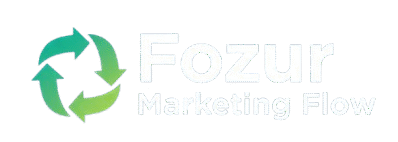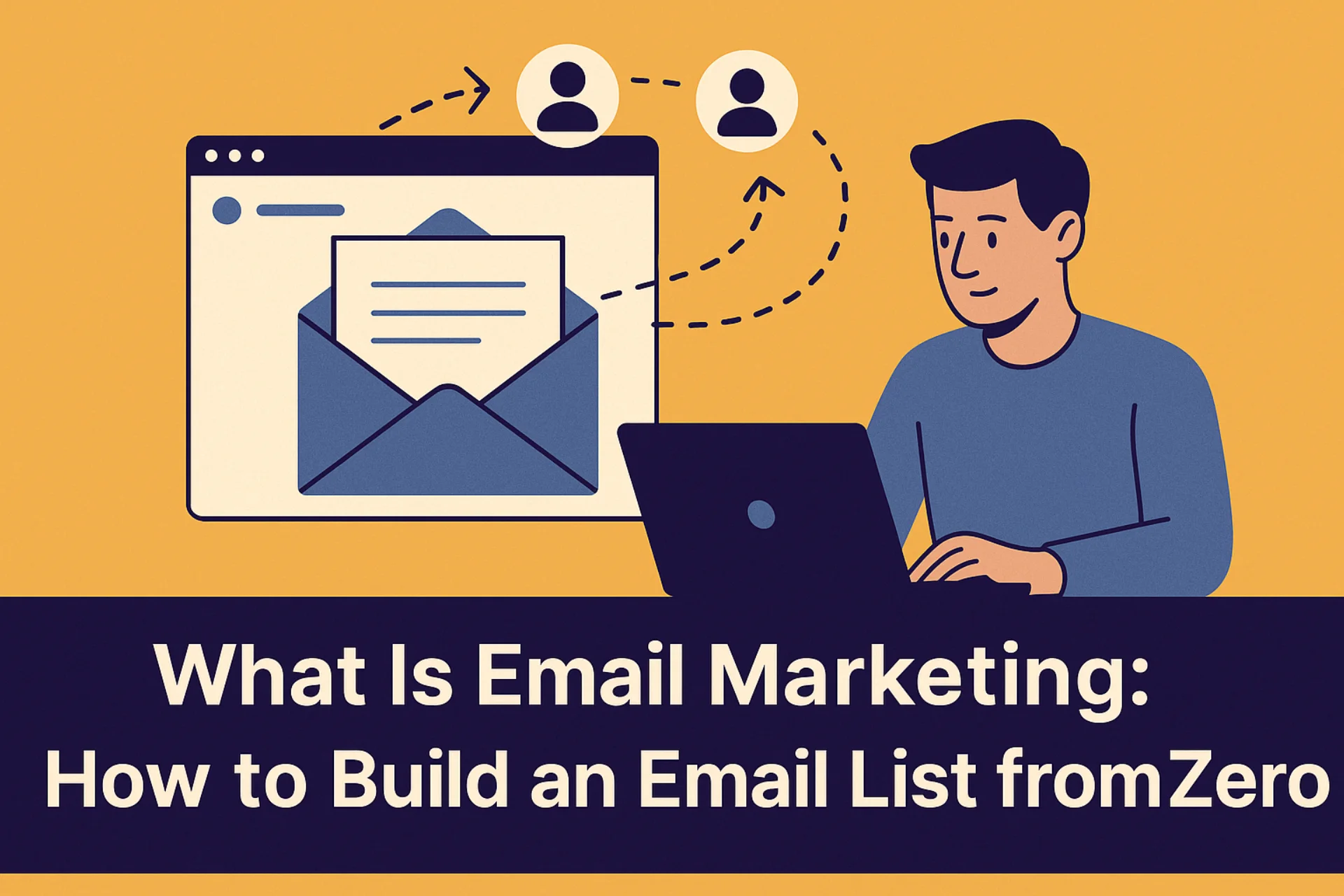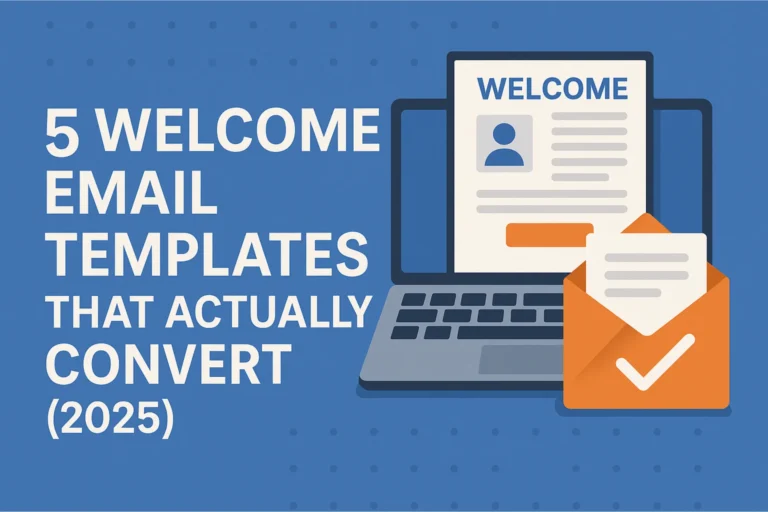What is Email Marketing: How to Build an Email List from Zero (for Beginners)
If social media vanished tomorrow, how would you reach your audience?
For most small businesses, the answer is scary: they wouldn’t.
That’s where email marketing changes everything. It’s the digital equivalent of having your own communication channel — one you fully control.
This article will teach you what email marketing really is, how to build your first email list from scratch, and the practical strategies that turn subscribers into loyal customers.
By the end, you’ll understand not just how to do it, but why it works — backed by proven examples and data from real marketers.
🧠 What is Email Marketing and Why It Matters
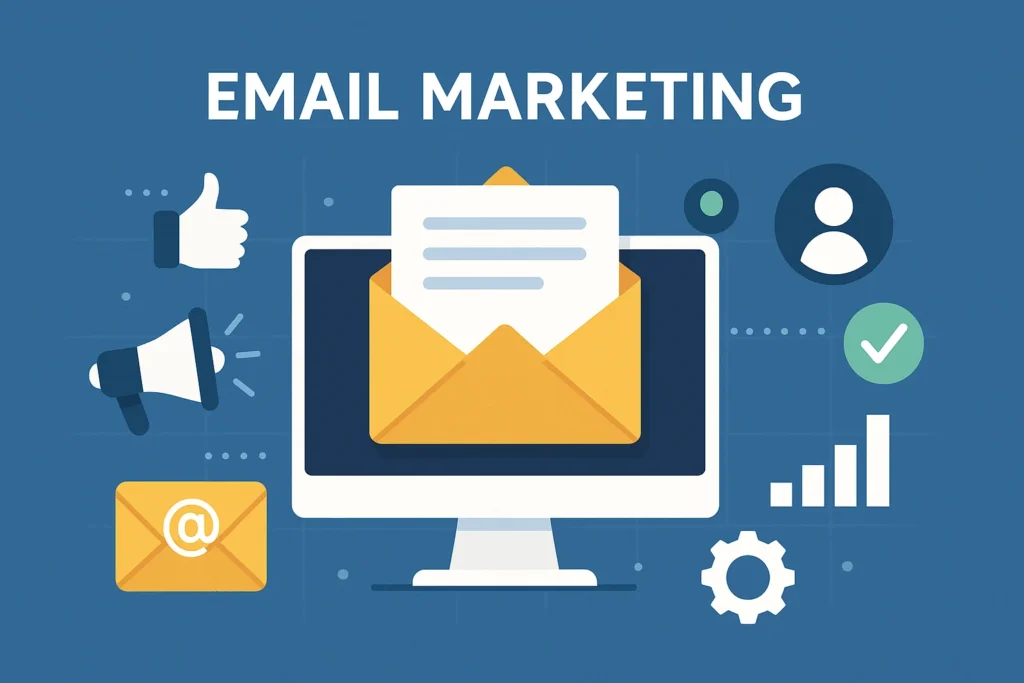
Email marketing is the art and science of building relationships through inbox communication. It’s not just about sending newsletters — it’s about educating, nurturing, and converting over time.
Unlike social media followers (which you don’t own), your email list is a long-term digital asset.
Here’s why it’s still king in 2025:
| Metric | Social Media | |
|---|---|---|
| Average ROI | $36 for every $1 spent | $5–$8 per $1 |
| Ownership | 100% yours | Platform-dependent |
| Conversion rate | 4–5% average | <1% typical |
| Personalization | Highly flexible | Limited |
| Algorithm control | Full | None |
The ROI alone shows why major SaaS brands and small businesses alike invest heavily in email automation systems.
⚙️ How Email Marketing Works
At a strategic level, email marketing follows a four-stage lifecycle, sometimes called the “Email Value Funnel.”
1️⃣ Attract — Build Awareness
You offer a reason to join your list (like a free guide or exclusive content).
2️⃣ Engage — Deliver Immediate Value
Your welcome email should “wow” readers — giving them something actionable right away.
3️⃣ Nurture — Stay Consistent
Use storytelling, tutorials, or education to build familiarity. Consistency creates trust.
4️⃣ Convert — Ask Authentically
When the timing feels right, invite subscribers to explore your product, service, or resource — softly, not aggressively.
This cycle repeats and compounds over time — turning subscribers into fans.
🧱 The Step-by-Step Blueprint to Build an Email List from Zero
Let’s go from theory to execution.
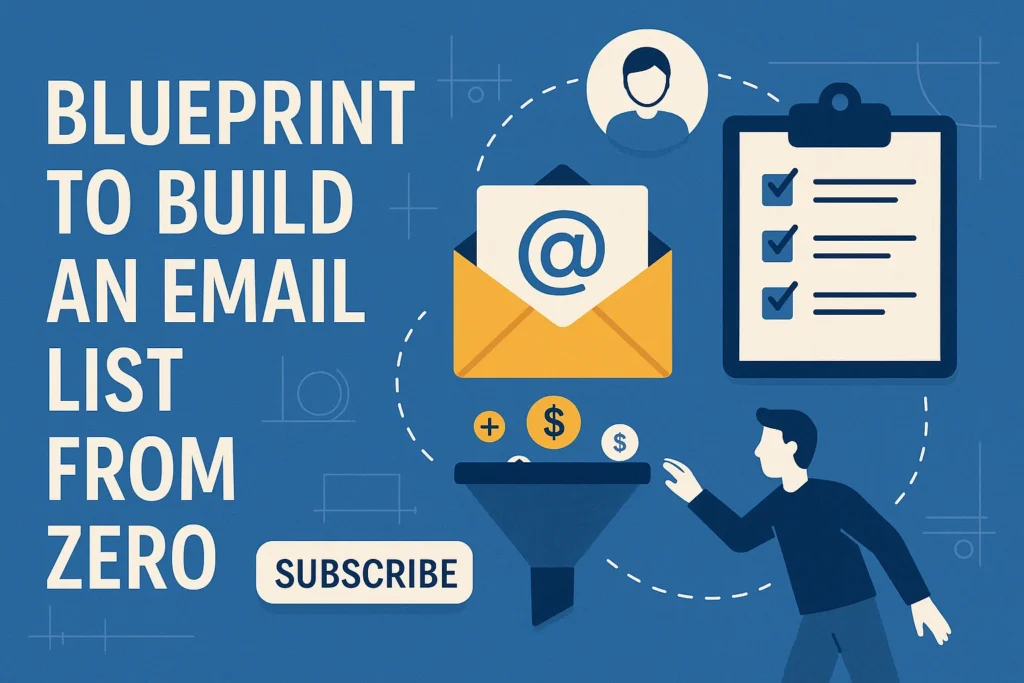
1. Define Your Ideal Subscriber Persona
Who are you trying to reach? Write down:
- Their main pain point (e.g., “Can’t grow sales”)
- Their desired result (e.g., “More loyal customers”)
- Where they spend time online (forums, platforms)
Pro tip: The better you understand your audience, the easier it is to create lead magnets that feel irresistible.
2. Create a Lead Magnet That Solves a Real Problem
A lead magnet is your entry ticket — something valuable that visitors get in exchange for their email.
The key: Immediate utility.
Examples of high-converting lead magnets:
| Type | Example | Why It Works |
|---|---|---|
| Checklist | “10 Quick Fixes to Improve Email Open Rates” | Fast, digestible, instant value |
| Mini eBook | “The Beginner’s Guide to Email Automation” | Builds authority |
| Template | “Ready-to-use Newsletter Layouts” | Saves time |
| Quiz | “What’s Your Email Strategy Personality?” | Interactive & fun |
Psychologically, this works because of the reciprocity principle — when people receive value upfront, they’re more open to trusting you long-term.
3. Optimize Your Signup Forms
Your form placement matters more than design.
Top-performing areas include:
- Homepage above the fold
- End of blog posts
- Pop-ups (with clear exit options)
- Landing pages
Keep it frictionless: ask for first name + email only.
Long forms kill conversions.
4. Send a “Value-First” Welcome Email
Your first email defines your brand.
It should:
- Thank the subscriber genuinely
- Deliver the promised resource immediately
- Set clear expectations (“You’ll get one email every week”)
- Invite engagement (ask one simple question like “What’s your biggest challenge in email marketing?”)
Pro Insight:
Welcome emails have 82% open rates on average (Experian study) — the highest of any campaign type.
5. Maintain Consistency with Content
Email lists die from neglect, not mistakes.
Maintain engagement through:
- Weekly newsletters
- Monthly summaries
- Seasonal tips or tutorials
It’s not about frequency — it’s about predictability.
Readers love knowing when they’ll hear from you.
💡 Real-Life Examples & Micro Case Studies
- The Solo Freelancer:
A copywriter built a 1,500-subscriber list by offering a “5-day email copy challenge.” She gained 80% of her clients from that list. - The Local Bakery:
Sent weekly “Weekend Specials” newsletters with mouth-watering visuals. Result? 40% increase in repeat customers within three months. - The E-Commerce Brand:
Used abandoned-cart reminder emails to recover 18% of lost sales — proof that automation drives real revenue even with small lists.
These examples prove: your list doesn’t need to be big — it just needs to be active.
🧭 Advanced Tips & Best Practices
Here are pro-level techniques even small marketers can use:
- Use the 80/20 rule: 80% education, 20% promotion.
- Segment smartly: Group subscribers by behavior (e.g., clicked, opened, inactive).
- Leverage storytelling: Make emails conversational — people remember stories, not stats.
- A/B test everything: Subject lines, send times, and content blocks all impact open rates.
- Clean your list quarterly: Remove inactive subscribers to protect deliverability.
- Stay compliant: Always include unsubscribe links and respect privacy laws (GDPR, CAN-SPAM).
These practices signal professionalism — something affiliate reviewers and readers both recognize.
⚠️ Common Mistakes to Avoid
- Buying email lists — Low-quality leads, spam risks, and blacklisted domains.
- Neglecting design: Poor formatting kills readability on mobile.
- Ignoring analytics: You can’t improve what you don’t measure.
- Lack of CTA clarity: Always give your readers one next step — even if it’s just “read our next guide.”
The difference between amateurs and pros? Pros analyze and adapt.
🏁 Conclusion & Next Steps
Email marketing isn’t just a channel — it’s your relationship engine.
You own it, control it, and grow it as an asset over time.
By understanding your audience, providing genuine value, and showing up consistently, you can turn even a tiny list into a thriving, engaged community.
Start small. Write your first email. Test your signup form. Build the habit — not the hype.
Because in the long run, email marketing rewards those who serve, not those who sell.
Frequently Asked Questions
Q1. How often should I send emails to my subscribers?
Consistency is more important than frequency. Most small businesses do well with one email per week or biweekly updates. The goal is to maintain engagement without overwhelming your audience.
Q2. What’s the difference between a newsletter and a marketing campaign?
A newsletter is primarily informational — updates, tips, or curated content. A marketing campaign is designed to drive action, like a sale or sign-up. Both work best when they balance value and purpose.
Q3. How do I grow my email list faster?
Offer valuable incentives (like checklists or mini-guides), promote your signup form on social platforms, and add opt-ins at strategic spots like blog posts or landing pages.
Q4. Is email marketing still effective in 2025?
Yes — in fact, more than ever. Despite the rise of social platforms, email marketing remains one of the most cost-effective channels, delivering high ROI and reliable audience reach.
Q5. What’s a good open rate for beginners?
Average open rates range from 20–35%, depending on your niche. Focus on improving relevance and subject lines rather than chasing numbers.
